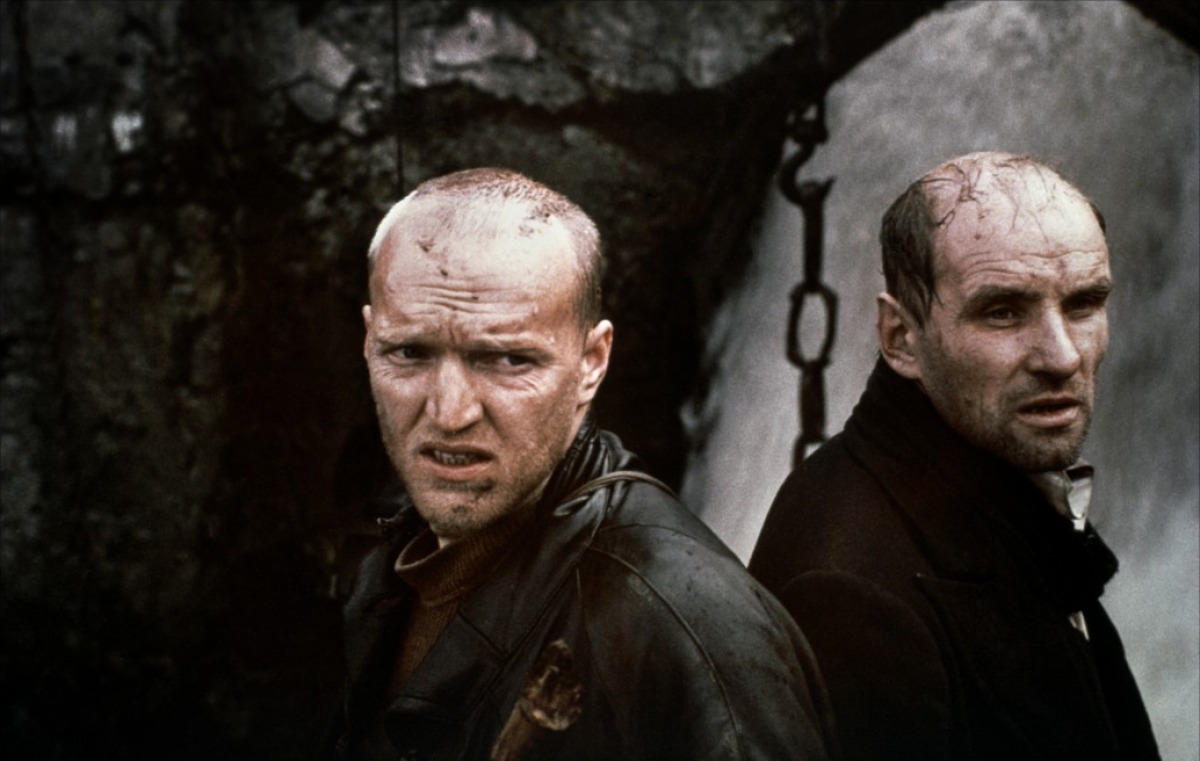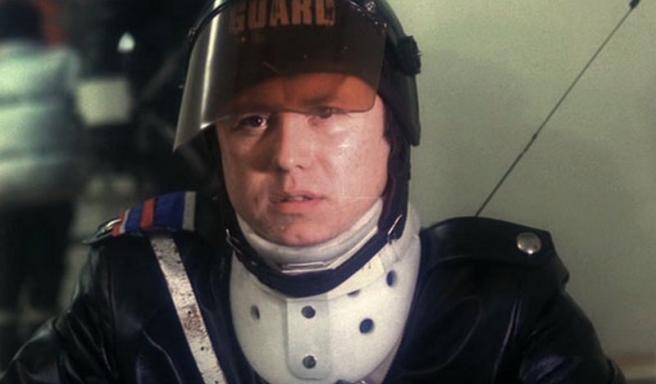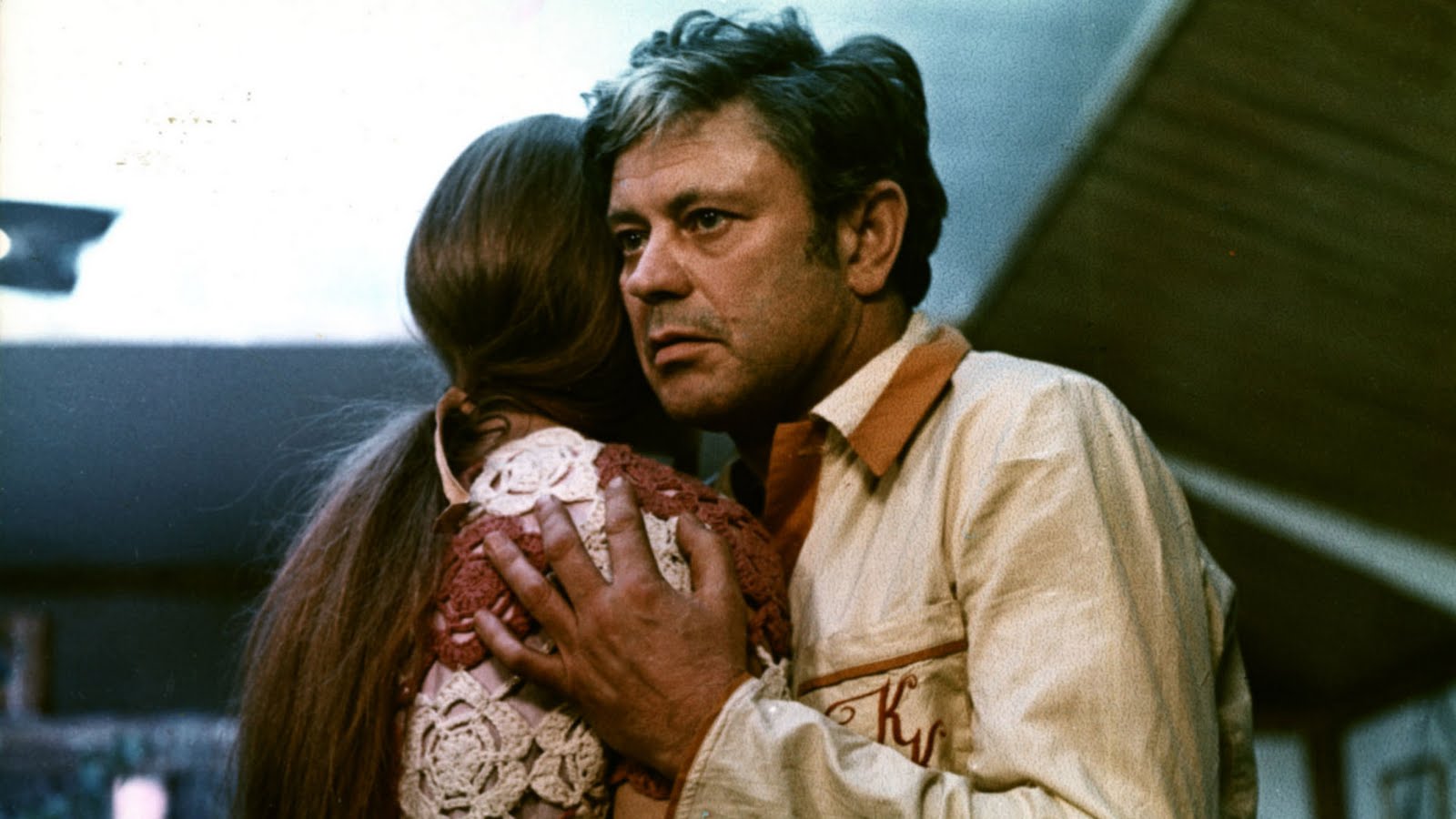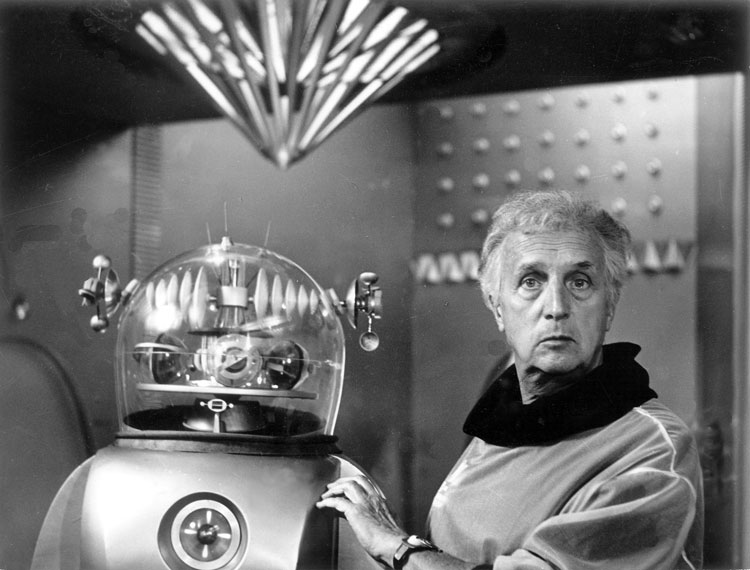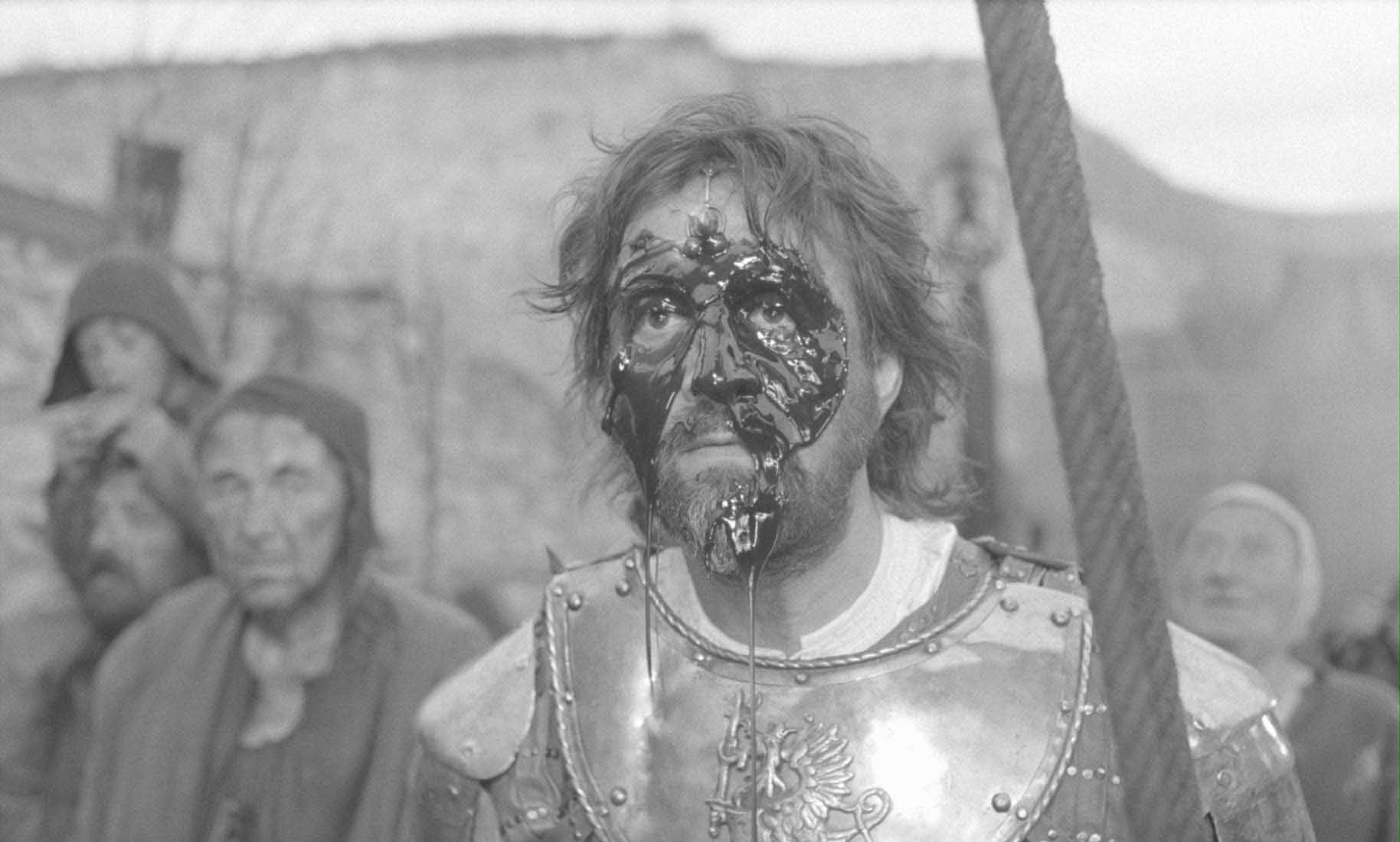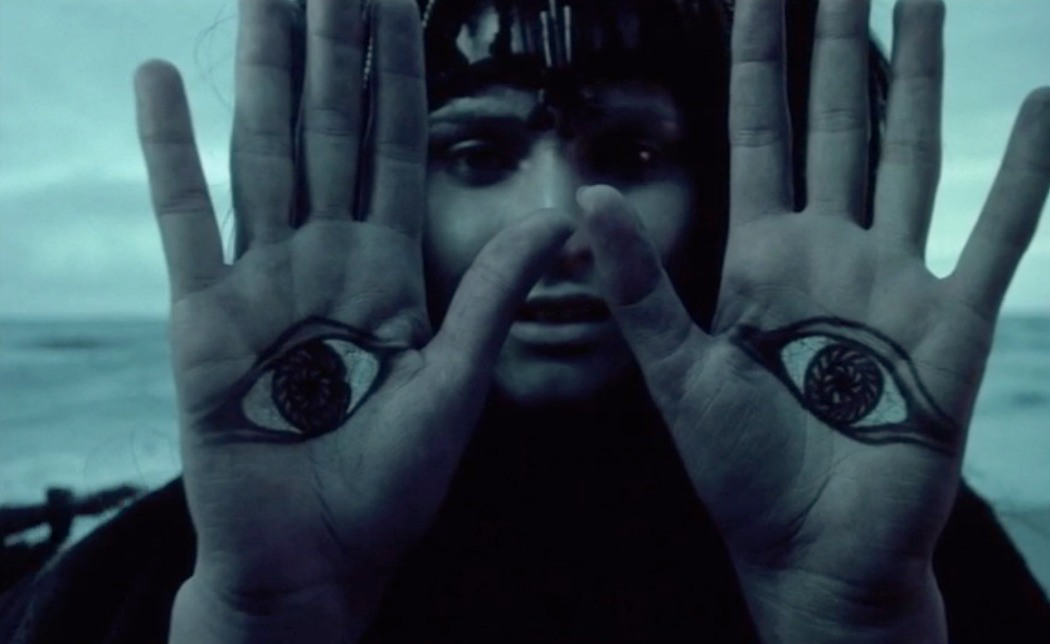From the Soviet era and after, eastern Europe has provided countless narratives about possible futures, from the political to the comical, to the downright horrifying. While the communist project faltered and ultimately failed, a sense of excitement or fear about change (revolution) has always been intrinsic to the ideological landscape.
Below is just a small selection of the futures that have been imagined by film-makers in the region. The movies on the list are ranked in no particular order.
1. War Of The World: The Next Century (Piotr Szulkin, 1981)
While it’s lumbered with an admittedly cumbersome title, Piotr Szulkin’s War of The World is a thoroughly underrated slice of Polish dystopian sci fi. As with so many dystopian films from Eastern Europe, analogies between the fiction on screen and the film maker’s real-world experience of Soviet dictatorship are quite obvious.
The protagonist is Iron Dem, the host of a popular TV show. Earth has been visited and surreptitiously colonized by a superior alien race from Mars. Iron Dem faces increasing pressure to become a mouthpiece of the state, which is controlled by the Martians and their collaborators. When he shows resistance, the TV host is met with increasingly brutal tactics.
As things get worse, Iron Dem begins to get a clearer apparatus that he was part of, and laments the stupidity of his indoctrinated audience.
2. Stalker (Andrei Tarkovsky, 1979)
Stalker is a loose adaptation Roadside Picnic, a sci fi novel by Boris and Arkady Strugatsky. Tarkovsky deploys several key ideas from the book, but, typically for this director, orients them towards deeply philosophical and meditative ends. In a dystopian future, “Stalkers” bring seekers to The Zone, an area closed off by the military.
According to legend, The Zone harbors a room which can grant a wish to anyone who enters. The film’s protagonists are not given names, rather they are defined by their respective professions: The Writer and The Professor. The shots of the protagonists’ evasion of the military blockade are sepia, the scenery is all mud, rain and metal. As they enter The Zone, the film turns to color. In fact, film stock played a particularly onerous part in the film’s production.
After having shot footage for a year on film with which Soviet labs were unfamiliar, Tarkovsky had to do reshoot much of the film. He also replaced his cinematographer. Other problems stymied the film’s production, the usual problems with funds of course, but there was also the high toxicity of the filming locations: near old hydroelectrical and chemical plants in Tallinn, Estonia. Crew developed rashes on their faces, and it has been suggested that later deaths from cancer were caused by the location.
For many, this film is the archetypal example of Contemplative Cinema: its highly original use of long tracking shots, long periods of silence and general quietude reappear in the work of modern film makers like Bruno Dumont, Nuri Bilge Ceylan, Bela Tarr and so many more.
3. Solaris (Andrei Tarkovsky, 1972)
Like Stalker, Solaris is a loose adaptation of a sci-fi novel, this time Stanislaw Lem’s novel of the same name. Also like Stalker, Solaris represents a concentrated effort by Tarkovsky to bring a philosophical and emotional depth to a genre he viewed as generally shallow.
Again, there is the use of various film stock to convey different times or moods. Much of the footage from earth is black and white, including one of the film’s most iconic and notorious scenes: a long drive through the circuitous highways of some nameless futuristic city (the scene was in fact filmed in Tokyo). This scene is so long, slow and quiet, that viewers are often perplexed as to its purpose.
One explanation that Tarkovsky gave is that he wanted to test the patience of audience members who just wanted action and spectacle. He wanted these members to leave the cinema out of boredom. For many, however, this scene is mysterious and thoroughly engaging: it sets the meditative tone and pace of things to come.
The film’s protagonist is psychologist Kris Kelvin, who travels to a space station to investigate the psychological disturbances among crew members. It is suspected that it is the proximity of the planet Solaris which is causing the disturbances.
4. Ikarie XB-1 (Jindrich Polak, 1963)
Jindrich Polak is perhaps the best known exponent of Czech science fiction, thanks mainly to Ikarie Xb-1. This film was among those viewed by Stanley Kubrick while researching for 2001: A Space Odyssey. While Kubrick’s film is obviously a highly original masterpiece, the influence of the earlier film can certainly be seen, especially in the early scenes establishing the mood on the space station.
The film takes place in the year 2163. A crew is sent to a mysterious planet orbiting Alpha Centauri. While their journey feels like a mere twenty eight months, fifteen years have elapsed on earth during the trip. Polak goes into painstaking detail to give a sense of the life on board the ship.
Unlike many of its predecessors in the genre, this films establishes a believable and human universe in which the plot can unfold. The film also features an excellent score, sometimes experimental and electronic, sometimes choral, by Zdenek Liska, who provided scores for many of the best films to come out of Czech cinema.
5. Hard to be a God (Aleksei German, 2013)
Ignatiy Vishnevetsky has remarked, “If Hard To Be A God isn’t the filthiest, most fetid-looking movie ever made, it’s certainly in the top three.” German’s film is a long and often gruelling episodic journey through a world that is half-way between realistic history and full-blown fantasy. Like Tarkovsky’s Stalker, it based on on a story by the Strugatsky brothers. With Stalker, Hard To Be A God shares a similarly filthy, ruined, dystopian aesthetic. Indeed, German had worked as Tarkovsky’s assistant director.
The plot isn’t all that easy to follow, especially for viewers unfamiliar with the novel it’s based on. The main character is a scientist, sent to a distant world that resembles some nightmarish re-imagining of feudal Europe.
The scientist seems to have lost track of what he’s there for, and takes up a privileged, god-like position among the natives, impressing them with his strength and intelligence. His task is supposedly to witness first-hand a cultural renaissance, but signs of any progress are hard to come by among all the horror and filth.
What’s more, the intellectuals are being culled, and Don Rumata, the scientist can’t do anything to stop it. The only modest signs of progress are brief bursts of music, but these are always drowned out by other, generally horrifying noises.
Hard To Be A God began filming in 2003, but wasn’t finished until ten years later. This isn’t too surprising for anyone who has seen the film. The sets alone look like they took years of planning. So too the remarkable use of camera movement.
The camera often moves as if filming a documentary. Characters can often be seen looking directly into the camera. But there is an obvious art to the surface spontaneity; one gets the impression that every move of the camera has been conceived in the filmed-maker’s imagination.
German unfortunately died before he could see the finished work. His son had to complete the work on sound and editing before it was ready for release.
6. On the Silver Globe (Andrzej Zulawski, 1988)
Andrzej Zulawski is best known to international audiences for the weird, wonderful and highly disturbing Possession: a film that is partly Cronenbergian, partly Lynchian, but also an experience unto itself. Zulawski’s interest in science fiction was already obvious, considering the more horrific elements of 1971’s Third Part of The Night. On The Silver Globe is based on a novel by the director’s grand-uncle, Jerzy Zulawski.
The film marked a return for the director to his native Poland, which he had fled for fear of censorship from the authorities. Unfortunately, when a new minister of cultural affairs was appointed, Zulawski’s fears became a horrifying reality: the film’s plot was interpreted as an allegory for Poland’s struggle with the Soviet authorities, and all footage was ordered to be destroyed.
Fortunately Zulawski had completed eighty percent of the film, and the footage was not destroyed. Using a voice-over to fill in the gaps, the film was shown to an appreciative audience at the 1988 Cannes Film Festival. While it may lack a little unity, for obvious reasons, the film is a visually mesmerising treat for anyone interested in the further reaches of the genre.
Of particular note are the outdoor shots from locations as far reaching as Mongolia, Georgia and the Baltic Shore. Zulawski and his crew succeed wonderfully at making these locations look as alien as possible.
